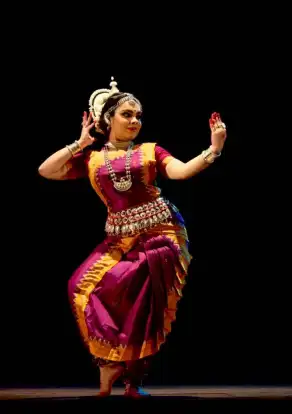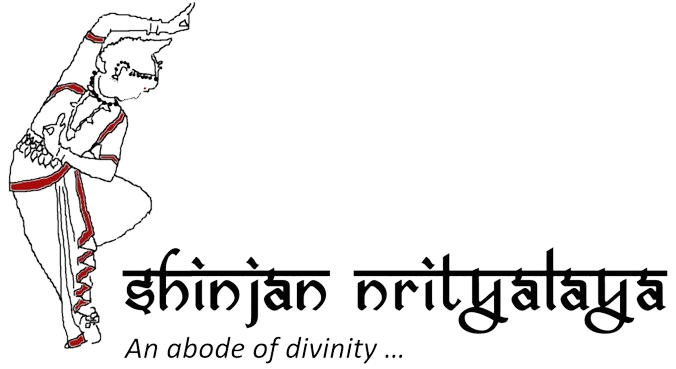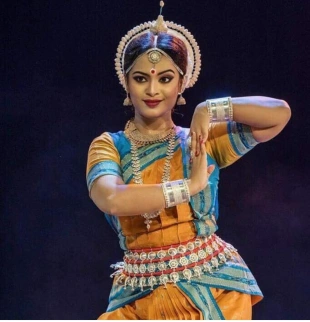
By Paulomi Chakraborty
Smt. Kapila Vatsyana in her famous book Classical Indian dance in Literature & Arts, said dance is yoga, a sadhana & a sacrifice. Yogacharya Pandit Ramakanta Kara of Orissa opines in the ancient days most of the sages, Gods & Goddesses were practicing dance after mastering the art of Yoga. Yogic practice enhances agility in body, improve power of concentration. It prescribes sacrifice and honour for duty. Karma Yoga (duty) according to Bhagabat Geeta, advocates selfless action & action with indifference to results. These are meant to end the agony, suffering & lead to a life of bliss & peace, happiness & ecstasy, which is also the ultimate aim of dance.
The word Yoga is derived from the Sanskrit word ‘Yuj’, means ‘to join’. This joining or unity is described in spiritual terms as the union of the individual consciousness with the universal consciousness. If we see in a practical level, yoga actually means of balancing and harmonizing the body mind and emotions. This is done through the practice of Pranayama, asana, mudra, bandha, shatkarma and meditation. The yoga philosophy is to teach the means by which the human soul may be completely united with the Supreme spirit through deep, absolute concentration & abstract meditation. There are various yogas or sadhanas to attain the ultimate mokshya or blissful union with the Almighty. They are Gyana Yoga, Bhakti Yoga, Karma Yoga, Nritya Yoga, Raja Yoga and Hata Yoga.
Dance or Nritya was codified by Bharat Muni & is considered as the fifth Veda. Nritta means to move about or to move the limbs. Indian classical dances, patronized by the temples also aim at salvation or union with the supreme power. In fact in Odissi dance the last item is aptly named Moskhya where the dancer seeks salvation & to be one with the Almighty.
In the Hindu tradition Gods & Goddesses dance as a way of expressing the dynamic way of energy of life. The image of Nataraj represents the eternal energy of life. The god of gods, Nataraj (Shiva), as the Lord of the Dance- is choreographing the eternal dance of the universe as well as more earthly forms such as Indian classical dance (which is said to have originated from his teachings). In Hindu mythology Shiva is also Yogiraj, the consummate yogi, who is said to have created more than 840,000 asanas, among them are the hatha yoga poses we do today. While a cultural outsider may not relate to these mythic dimensions in a literal way, dancers in India revere the divine origins of their dances, which were revealed to the sage Bharata and transcribed by him into the classic text on dance drama, the Natya Shastra (circa 200 c.e.). What many practitioners of yoga do not know is that one of the central texts of yoga, Patanjali’s Yoga Sutra, written around the same time, was also inspired by an encounter with Nataraja.
While there are many philosophical and practical connections between yoga & dance, the principal of unifying opposites is essential to both systems. Hatha represents the figurative joining of Sun (ha) with Moon (tha), which again refer to the heat & coolness & compared to the masculine & feminine energy. On a practical level this again translates the balance of differing qualities within a pose: strength & flexibility inner relaxation & concentration. In classical dances this theory is also reflected through Tandava & Lasya. Tandava is the masculine, vigorous vibrant dance of Lord Shiva. Lasya is the petal soft feminine graceful dance initiated by Parvati. According to California based Odissi dancer Nandita Behera Tandava is the strong stamping of feat & Lasya is the fluidity in the torso, graceful hand gestures of the upper body. The lower body executes the footsteps with force; uses power with thunder & the upper body is open & graceful like a flower in full bloom. The beauty of dance should not be disturbed by the power of the Tandava nor it should be weakened by the softness of Lasya, but a balance should be maintained to bring out the best in aesthetics. Yoga philosophy also advocates balance. Certain Asanas or Pranayamas are known for either their heat generating or cooling effect. Again Yoga practitioners concentrate on balancing the three doshas- Kapha, Pitta & Bayu in the body.
Asanas are most close to dancers, which lay emphasis on the physical culture & some of the Asanas are used as dance postures. The Karanas the counterparts of asanas, are linked into a sequence known as Angaharas. The Karanas are based on the centerline of the body in relation to gravity. It also gives enough attention to pathways energy that flows through the body. The poses are done close to the earth. Example: Chowk pose (in Odissi) or the bent knee position.
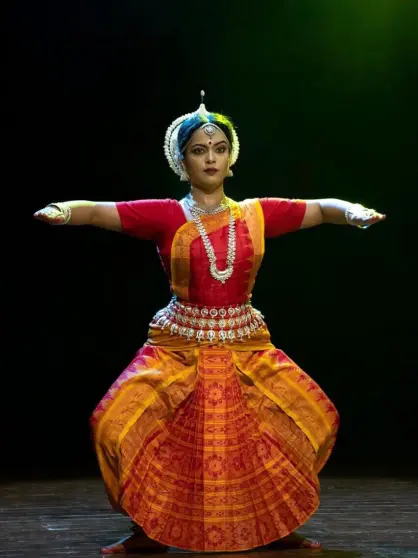
Paulami Chakraborty in a perfect chauka pose
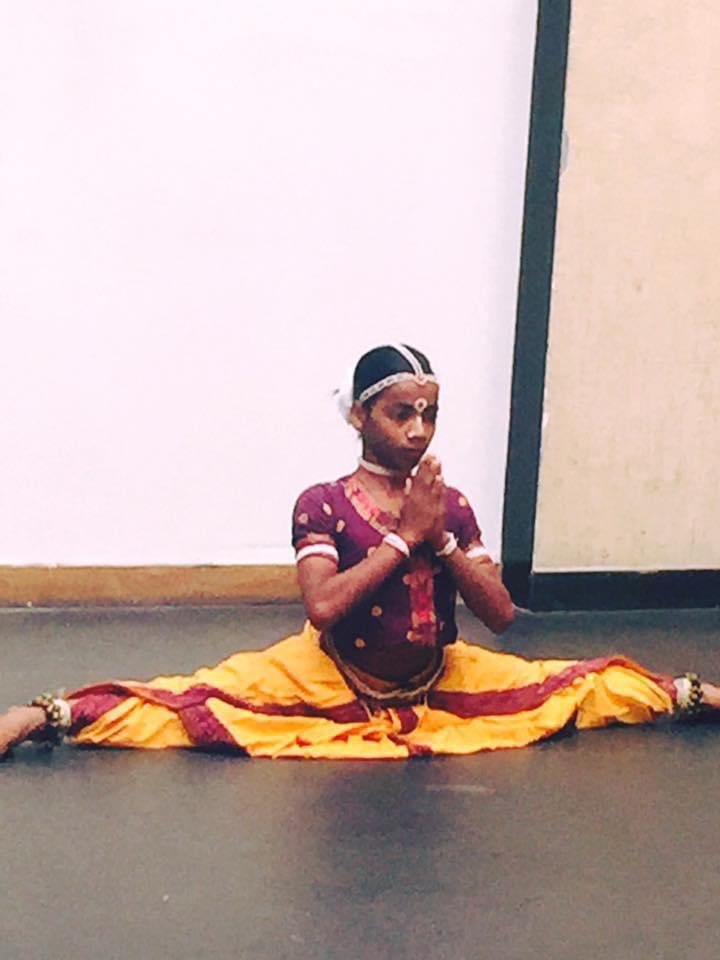
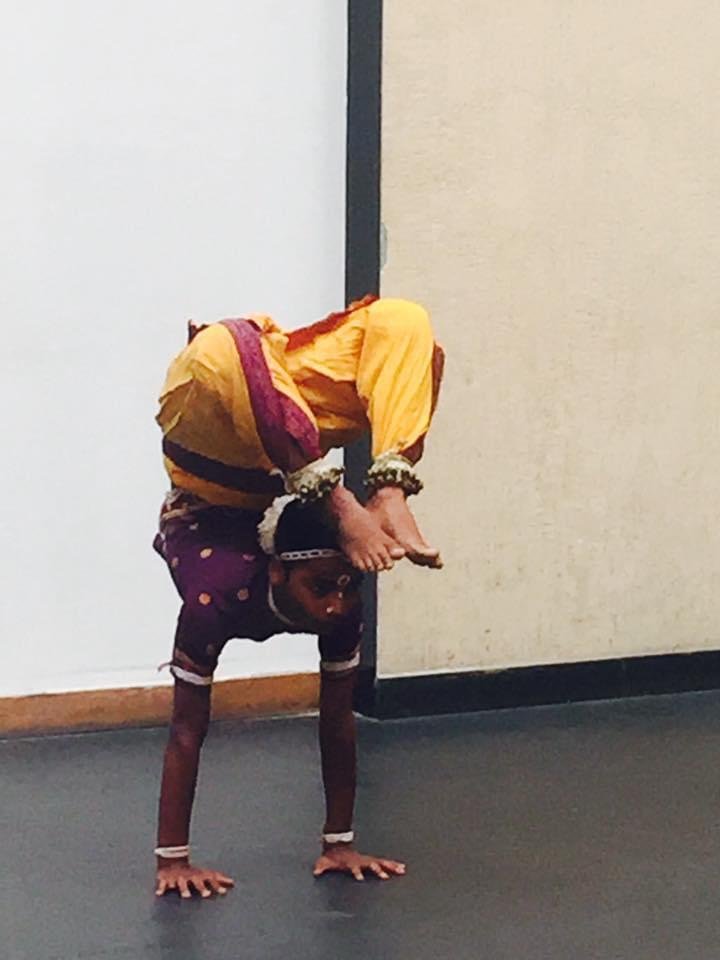
Bhangis of Odissi dance can be compared with Asanas. The Gotipua dancers of Orissa practised Bandha Nritya & not surprisingly some of them are practised as Asanas in Yoga.
The Mudras or hand gestures both used in Dance & Yoga again has many interesting features. According to yoga the five fingers are ruled by the five elements namely: earth, water, air, fire & space & joining one with another generate energy flow. The Hamsasya Mudra of dance ( Joining of thumb by index finger ) is Gyan Mudra in Yoga & increases concentration.



Trishula Hasta: The ‘Trishula hasta’ in classical dance matches with ‘Varun Mudra’ which helps to balance the water content in body by activating fluid circulation through the body, keeping it moisturized. This leads to healing for many skin conditions.
Mayura Hasta: The ‘Mayura Hasta in classical dance symbolizing ‘Peacock’ resembles ‘Prithvi Mudra’ in Yoga that improves the body strength. It improves self confidence, very much important when we are on stage, gets rid of confusion, anxiety, fearlessness, fickle mindedness. It is famously known for improving weight and hair growth.
Simhamukha Hasta: The ‘Simhamukha Hasta’ in classical dance symbolizing a ‘Lion Head’ is similar to the ‘Apana Mudra’ in yoga which regulates diabetes and helps to cure constipation and piles
Kartarimukha Hasta: The ‘Kartarimukha Hasta’ in classical dance represents ‘Scissors’ and tally with the ‘Prana Mudra’ in Yoga. It provides energy and health. It improves eyesight, increases the body resistance to diseases, reduce deficiency of vitamins, and remove tiredness. Additionally, it reduces hunger pangs during fasting.
According to Maharshi Patanjali physical, mental & spiritual culture has to go through eight stages of practise: Yama (restrain from desires), Niyama (discipline), Asana (control of the body), Pranayama (control of the breathing), Pratyahara (control of the senses), Dharana (contemplation & concentration), Dhyana (meditation) & Samadhi (super conscious stillness). The first two phases Yama & Niyama are absolute necessary for the dancers. Niyama also preaches cleaning of the body & and the mind. Bhakti Yoga is another form of Yoga to attain the bliss of supreme power, and dance could be considered as Bhakti Yoga. The devadasi system confirms it.
From the above discussion it is evident that Yoga & dance are correlated & Dance is Yoga to attain salvation or to be united with the supreme power. In present time the philosophy of dance is not fully understood. Though dance is an expression of happiness, vigorous practice makes the dancers prone to physical discomfort & injury. To become successful in the profession dancers often experience unusual stress & nerve-racking state. So in this crisis Yoga can only help the dancers to strengthen muscles & bones build stamina, uplift their confidence & maintain the inner peace. In the other hand Yogic postures can be utilized in the dance choreography.
Paulomi Chakraborty is a Senior Disciple of Guru Smt Aloka Kanungo and also the recipient of Junior Research Fellowship from the Government of India.
Dated: 21 September, 2020


